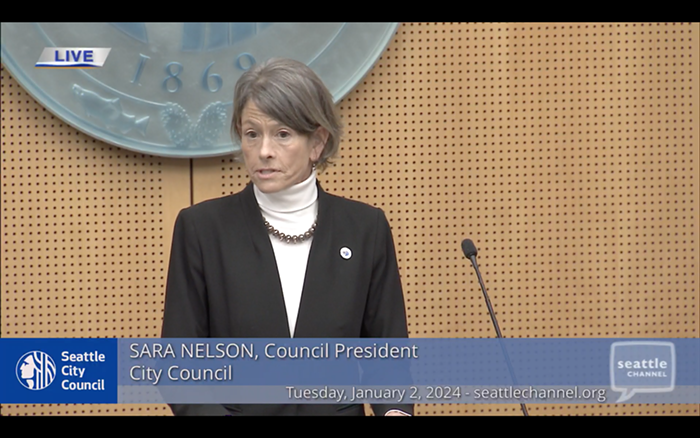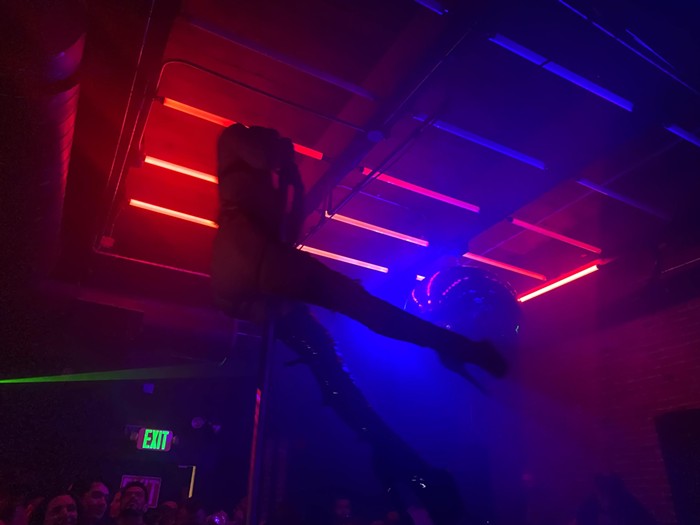How did Johnny Nicholas end up in this hell? It all began in Port-au-Prince, Haiti, where he was born into a prosperous and well-connected family. During these early years, Johnny Nicholas spent much of his time dreaming about the American way of life. He learned English from the British, and American gestures and accents from the U.S. Marine Corps stationed in Haiti, and told everyone he met that he was an American. So obsessed was he with America that he changed his name from Jean Marcel Nicholas to the all-American Johnny Nicholas.
After getting in trouble with the law in his teens, Johnny Nicholas fled to France where, as J. Carl Ganter writes in his short Black History Month article for MSNBC, "Forgotten Black WWII Chameleon," Nicholas reinvented his identity as an American. He was rich, a big-time gambler, a charming playboy who had film stars for friends and a luxurious apartment near the Eiffel Tower. Even after the Nazis marched into France in June 1940, handsome and athletic Johnny managed to live on in comfort as the rest of Paris suffered. He owned a big car, had lots of cash to spend, and held a German pass that permitted him to drive around the city after curfew hours. He also reinvented himself as a gynecologist, and displayed a fake medical degree from some Boston university in his office.
Johnny, who rescued downed American and French pilots in his spare time, might have breezed through the nightmare that consumed Europe had he not been turned in to the Gestapo by a heartbroken lover named Florence. He was then promptly sent to Camp Dora, where he was registered as Dr. Johnny Nicholas, a medical doctor and a captured American fighter pilot. "Like so many of those who were in the prison camp," explained Huge Wray McCann, author of In Search of Johnny Nicholas, "he had to use his wits to survive. If you couldn't tell a good story then you didn't stand a chance in the camps. And that is what Johnny did so well; he was a charmer who could tell a great story."
Despite his lack of any real qualifications, Johnny became something of a hero in Camp Dora, where he prolonged the lives of his fellow prisoners with improvised medical services. "He prescribed drugs, sutured wounds, performed surgery, set broken limbs in casts improvised out of paper," J. Carl Ganter writes. "He relieved skull fractures using carpenters' tools." It was a "magnificent hoax" that kept hundreds of men, women, and children from death at the darkest hours of the war.
While the 27-year-old Dr. Johnny Nicholas tended to exhausted slaves, a 27-year-old rocket scientist named Dr. Wernher von Braun worked hard to inflict more pain and suffering on the slave population at Camp Dora. The son of a baron and baroness, von Braun was the leading scientist at Camp Dora and an influential member of the SS. His fascination with rockets began in his mid-teens, and by age 20 he had designed his first weapon. His early rockets never flew, but his enthusiasm so impressed Nazi generals that he was hired to lead the military's rocket artillery unit. By 1944, von Braun was the main man at Mittelwerk, ensconced in a comfortable office with a window that looked out onto the courtyard where any slaves caught attempting to sabotage his mad inventions were tortured and hanged.
Near the end of the war, Johnny Nicholas escaped Mittelwerk and "hobbled 60 miles to the town of Lubz, where troops from the U.S. 87th Cavalry Reconnaissance Squadron evacuated him to a Paris hospital," according to Ganter. Baron Wernher von Braun, on the other hand, left Mittelwerk in the comfort of a passenger train, for the welcoming arms of American "Counter Intelligence." A month later, von Braun and 100 of his Nazi scientists were in the United States of America, where they were "deemed vital to national security" by the U.S. War Department. Meanwhile, Jean Marcel "Johnny" Nicholas, who had contracted tuberculosis while in Camp Dora, was in a hospital spending the last two months of his life composing a now-lost manuscript about the dreadful underworld that was the birthplace of the space age.
"Everything that is now in space had its origins [at Mittelwerk], not in America or Russia," said Rene Steenbeke, a retired Belgian army officer who survived Camp Dora. "This is where a new science started, but it is also where science and death met" (Reuters). Indeed, 27,000 slaves died at Mittelwerk during the war.
Tomorrowland
In 1955, Walt Disney opened Tomorrow-land. This was a futuristic theme park that had--along with a monorail and space rides--an 80-foot, needle-nosed rocket called the Moonliner as its centerpiece. Taller than the Sleeping Beauty Castle, the Moonliner was a dream model of a future commercial rocket that would transport businessmen and rich tourists to the moon in the distant year of 1986. For the sake of verisimilitude, the Moonliner also had a TWA logo on its side. But the most intriguing thing about this massive rocket was its likeness to a V2 rocket, which was no accident--Disney's Moonliner was designed by Wernher von Braun. Ten years after the war ended, von Braun was not only an American citizen and a scientist working for the army, but also a consultant for Disney.
During this time, von Braun also appeared, with a slide rule in his pocket, on Disney's popular TV show Man in Space. With his good looks, perfect phrases like "castles in the air" (which he used to describe a rotating space station), and his total, pure commitment to space travel, von Braun won the hearts of millions of Americans. Indeed, only a consummate charmer could obscure such an ugly past and successfully reinvent himself as a visionary.
Two years after von Braun's consumer-friendly Moonliner landed on Disney's planet, a barely visible object slid across America's sky. This flying object, dubbed Sputnik (Russian for "fellow traveler"), transmitted to the world below a high-pitched beeping sound. To the Soviets, who made and launched this "man-made moon," as it was called by NBC News, this was the sound of success. To Americans, it was the sound of failure. The following morning, October 5, 1957, newspapers across the country ran big, bold headlines declaring "Red Conquest!" and "Pearl Harbor of the Stars!" At this low moment in American history, "the Space Race" began.
Shortly after Sputnik was launched, the American government picked the Navy, which had been developing a rocket called the Vanguard, to launch American pride into space. When von Braun learned of the government's decision, he arrogantly told Defense Secretary Neil McElroy that the Navy's rocket "would never make it," and insisted that his team of rocketeers, who had been building better and more deadly weapons for the U.S. Army in Huntsville, Alabama, could launch a satellite within 60 days. Initially, his offer was ignored, but when the Soviets launched the first living organism into space--Laika, the doomed dog sent into space on a one-way ticket--on November 3, 1957, the American government panicked and ordered America's favorite Nazi to get to work.
While von Braun and his team worked, the Navy made a desperate attempt to salvage America's self-esteem by launching, on December 2, 1957, its Vanguard rocket. At 11:45 a.m., the switch in the command center was thrown. Outside on the launch pad, the Vanguard spewed black smoke, shot out flames, rose four feet into the air, and then exploded. The satellite that the Vanguard failed to deliver to the stars was later found beeping in the grass. Deeply embarrassed by "Stay-putnik," as one headline called it, the American government placed all its hopes in our Nazis. On January 31, 1958, von Braun launched a Jupiter-C rocket from Florida that successfully deployed America's first satellite into orbit.
Proud of its accomplishment, America breathed a sigh of relief. And by the fall of that year, NASA was formed, and two years later von Braun's "rocket development center transferred from the army to the newly established NASA and received a mandate to build the giant Saturn rockets" (according to www.nasa.gov). Von Braun became the first director of NASA's Marshall Space Flight Center and officially began the space agency's long and controversial dependency on Nazi scientists.
The following year, 1959, the Soviets amazed the world again by striking the moon with a spacecraft called Luna. A year later, in his inaugural speech, John F. Kennedy called on Americans "to invoke the wonders of science [and] explore the stars." (And, of course, to show those damn Soviets what Americans were made of.) That spring, the unstoppable Soviets sent the first man into space, Colonel Yuri A. Gagarin, on a rocket named Vostok (which means "east" in Russian). A month later, America launched its first man in space, Alan B. Shepard, on a vehicle named Freedom 7. But Freedom 7 was nothing more than a modified military rocket called the Redstone, which was a direct descendant of the World War II-era V2 rocket designed by Baron Wernher von Braun.
Men and Boys
The Space Needle dream was conceived in 1959, when a Seattle businessman named Edward E. Carlson sketched it out on a napkin (or on a coaster--historians are still unsure as to which it was) while visiting Stuttgart Tower in West Germany. He was inspired by the concrete, the thrust, and the radiant power of the German television tower, which, by the way, was designed by a Nazi civil engineer named Fritz Leonhardt, "the father of television towers." Being a restaurateur, Carlson dreamed of a profitable restaurant hovering over the World's Fair that Seattle was planning to hold. By the summer of 1961, his impossible dream had become an impossible reality.
The fair that brought the Space Needle to Seattle was first suggested by a city councilman, Alfred Rochester, as a way for the city to celebrate the 50th anniversary of the Alaska-Yukon-Pacific Exposition. Seed money to the sum of $5,000 was offered up by the city council, and a committee, headed by restaurateur/dreamer Carlson, considered possible themes. Under the spell of Sputnik, the committee selected the future, space, and science over a historical celebration of the men who tried (and mostly failed) to strike it rich in Alaska.
"In the wake of American anxiety over the launching of the Soviet satellite Sputnik, the exuberant audacity of the Seattle greenhorns hit pay dirt," historians Sharon Boswell and Lorraine McConaghy wrote in The Seattle Times on September 22, 1996. The humorist Bill Speidel was similarly candid in his little book, Through the Eye of the Needle (1989). "The head of the planning committee, Edward E. Carlson, thought of how the federal coffers were beginning to open up to anything that even sounded like space. Russia had beaten the United States to the punch by launching Sputnik [and this was] the golden opportunity...."
In other words, the federal government would have never offered a dime had the World's Fair been about salmon, wagons, totem poles, trees, bears, enterprising prostitutes, and desperate madmen searching for gold in cold mountain passes. The federal government's support came because the theme was directly linked with American military interests. Even Boswell and McConaghy, in their generally rosy account of the fair, admit that "Century 21 was a Cold War fair."
And our Cold War fair quickly attracted the stars of the Cold War. Before the Space Needle was completed, the Nazi murderer and American hero of the rocket era (he was awarded the DAR Americanism award by the Daughters of the American Revolution, an award the DAR never bestowed on, oh, Martin Luther King Jr.), star of the popular Walt Disney television program Man in Space, paid a visit to Seattle. In Don Duncan's book Meet Me at the Center, there is a photo of a smiling Wernher von Braun standing at the base of an under-construction Space Needle with the fair's project manager Ewen Dingwall. Clearly, the activity pleases von Braun; it makes perfect sense to him. The extravagance, the waste, the terrifying vision, the hundreds of laborers wasting their little lives on something enormous and dreamy; the will of one man realized through millions of dollars, thousands of hours, and tons of raw materials. What von Braun saw in Seattle probably reminded him a lot of the view from his office window at Mittelwerk.
Dingwall is also smiling in the photo, but for wholly different reasons. Like the Space Needle employees of today, he was required to smile at all visitors, especially important ones like Wernher von Braun.
The Century 21 Fair began with a 21-gun salute, bursts of cannon fire, and a message sent via the stars by America's space president, John F. Kennedy. By pressing the same telegraph key that was used by President Taft to inaugurate the Alaska-Yukon-Pacific Exposition in 1909, JFK beamed a message from the Oval Office via "an antenna in Andover, Maine. [And a] telescope picked up [the] impulse that was [then] relayed to the fairgrounds (Don Duncan)." The message declared, "Let the fair begin!" and at that moment, "Aerial bombs exploded, spilling out tiny flags. Ten Air Force F-102's from the 64th Fighter Interceptor Squadron at Paine Field swooped over the fairgrounds." Seattle's Cold War fair was open for business.
Between the Buck Rogers space-station motif of the KeyArena, the U.S. Science Center (which cost the federal government $9 million to build), NASA's full-scale models of the Mercury capsule and the Saturn V rocket (designed by von Braun), and the Space Needle, Seattle had constructed the military-industrial complex's idea of a kindergarten--a kindergarten designed to delight children, whose heads were already filled with images of conquering astronauts in fishbowl helmets zapping green aliens with deadly ray guns.
A month before the fair closed (nearly 10 million souls passed through its gates), President Kennedy walked onto a platform on a football field at Rice University and informed Houston that there were big bucks to be made in the space race: "Space expenditures will soon rise some more, from 40 cents per person per week to more than 50 cents a week for every man, woman, and child in the United States." He then described the monster pleasure and power of a Nazi-designed rocket: "We have felt the ground shake and the air shattered by the testing of a Saturn C-1 booster rocket."
JFK announced that America would place a man on the moon within the decade, and concluded his speech with this liftoff: "Space is there, and we're going to climb it; and the moon and the planets are there, and new hopes for knowledge and peace are there. And, therefore, as we set sail, we ask God's blessing on the most hazardous and dangerous and greatest adventure on which man has ever embarked."
On July 16, 1969, Kennedy's lunacy was realized by Wernher von Braun's Saturn V rocket, which carried Apollo 11 to the moon.
A Million Civilizations
Eleven years after the launch of Apollo 11, PBS aired Cosmos, hosted by a handsome astronomer named Carl Sagan. Sagan's Cosmos was, in terms of its influence and popularity, the direct descendent of von Braun's Man in Space. But beyond their preoccupation with outer space, the two men's shows had little in common. Von Braun's language and gestures were manly and arrogant; he spoke about "conquering space" as if it were a woman who needed to be tamed by a penetrating rocket. For Sagan, space was an androgynous place. In fact, the name for his TV program was initially Man and the Cosmos, but Sagan's influential feminist wife, Ann Druyan, urged Sagan to change the program's name to the clear, enchanting, androgynous Cosmos. This was a soft cosmos, one whose wonders were to be investigated not by hardened capitalists or generals, but by soft scientists. Sagan was a soft-spoken host, a motherly/fatherly scientist, and not the master of the universe, unlike Disney's Man in Space, whose Nazi scientist was confident he could have his way with the moon, Mars, and the stars.
Unlike the generation before him, Carl Sagan did not come into space science with bloody hands, but with the clean and honest hands of a man of reason. Born in Brooklyn to an open-minded father who was a garment worker, Sagan attended the University of Chicago in the '50s, and while von Braun's crack scientists were busy developing intercontinental ballistic missiles in Huntsville, Alabama, in the early '60s, Sagan taught science at the black college the Tuskegee Institute, in Tuskegee, Alabama (the very school where Johnny Nicholas would have learned to fly a fighter plane had he actually been a black American pilot). Indeed, the only act of violence associated with Carl Sagan's upbringing is a rumor that his father killed an anti-Semite in Austria before emigrating to America. Other than this seemingly fantastic tale, there's nothing in Sagan's early history but the all-American immigrant story of rising from the bottom to the top.
Everything about Cosmos was enlightened. Its theme song, "Heaven and Hell," which was composed by Vangelis, was soothing and profound. Sagan's emotional and rhetorical mode was that of perpetual awe at the sight of bright things. As Keay Davidson wrote in his biography, Carl Sagan: A Life, "Sagan was a 'merchant of awe,' his favorite adjective [was] astonishing." The spacecraft/set Sagan used to travel through wonderful space and marvelous time was not a penetrating metal rocket, but a soft UFO called Spaceship of the Imagination. With translucent skin and a control panel of glittering crystals, Spaceship of the Imagination came alive with light as Sagan calmly waved his hands over the controls. Often, the show surrendered all pretense of purpose and function to the sole pleasure of watching Sagan cruise through deep space at the beautiful speed of light.
A pacifist and a pot smoker, Sagan was concerned about the environment, supported women's rights, and criticized the politics of the Cold War. During the last years he spent on Earth, Sagan had made it his mission to get space science out of the arms race and to liberate it from generals and Nazi scientists. "The Apollo 11 was not mainly about science," he wrote of von Braun's greatest accomplishment in his 1994 book, Pale Blue Dot. "It was not even mainly about space. Apollo was about ideological confrontation and nuclear war--often described by such euphemisms as world 'leadership' and national 'prestige....' When President Kennedy formulated the Apollo program, the Defense Department had a slew of space projects under development, ways of carrying military personnel up into space, means of conveying them around the earth, robot weapons on orbiting platforms intended to shoot down satellites and ballistic missiles."
Though dreamy when cruising about the cosmos in his translucent Spaceship of the Imagination, Carl Sagan was sober when it came to the hard realities of space research: It was essentially war research. Furthermore, he recognized that his criticism of the Department of Defense and NASA (which, though civilian, is still to this day a part of the military budget) placed him in a contradictory position, because one could not denounce the Cold War and at the same time speak of flying to Mars; one made the other possible.
So, what was his solution to this contradiction? Aliens. Not aliens whom little boys zap with laser guns, but aliens with whom we could develop enlightened relationships. This was Sagan's big bet. If he could only find aliens, then he'd get all the funding he needed and end space science's unhealthy dependency on the Pentagon. As fantastic as this may sound, for Carl Sagan it was a practical answer to the problem, because he believed the universe was teeming with aliens. In his essay "The Search for Extraterrestrial Intelligence," Sagan stated that there were at least "a million civilizations in our galaxy." And not just any old civilizations, but ones much more highly evolved than our own. Sagan's aliens were never stupid or smelly or into loud music, but were orderly, thoughtful citizens of advanced civilizations. These beings of light and reason would not only save us from the dark hell that von Braun's nuclear rockets were ready to plunge us into, but would also make excellent spokespersons for increased public spending in space research.
Sagan's career was consumed by this hope. He wanted to hear an "an orderly radio signal" from technically advanced aliens on a radio telescope and give them directions to Earth, as he did in the plaques that were attached to Pioneer 10 and 11. He was so committed to this discovery that he was often called our "ET go-to guy." One writer, Vivian Darkbloom, the author of Terra and Other Worlds, called Sagan the "Star tsar of the Galactic Union." Another, Karl Young-Mays, called him "The Ambassador to Earth."
But sadly for Sagan, the aliens never sent a beep to Earth's ambassador. And the spacecrafts we sent out farther and farther into deep space found only colder and colder planets. The universe was empty, and after the end of the Cold War in 1989, space came to an end.
"Ironically, the end of the Cold War (which Sagan so strongly sought) had the corollary of discouraging the international exploration of space," David Morrison wrote in Skeptic magazine. "Instead of beating swords (military missiles) into plowshares (scientific spacecraft), swords were... put into mothballs."
The End of the Universe
In late 1994, Carl Sagan contracted a rare disease called myelodysplasia, a blood disorder that can lead to leukemia. Sagan turned to the Fred Hutchinson Cancer Research Center for treatment and moved his whole family to Seattle, renting a home in the exclusive Highlands neighborhood. It is during this time, the last two years of his life, that Carl Sagan ate at the Space Needle's rotating restaurant, high above Seattle Center. Picture Carl Sagan, the star tsar of the future Galactic Union, rising to the top of the Space Needle, and then sitting down at a table in the rotating restaurant and ordering overpriced food from a perpetually smiling waiter. How tragic! Tragic because all his attempts to free space science from the Cold War failed, and now here he was eating in a monument to the Cold War itself. Tragic because the Space Needle was more real than the "cardboard spaceship" he used in Cosmos. Finally, tragic because by this time, the mid-'90s, both space science and Sagan were in a fatal decline.
Four months before Carl Sagan's death, Reason magazine predicted the death of space exploration. Seeing as no aliens had arrived, the article made one last desperate attempt to justify manned space travel. The author, Frederick Turner, suggested that a "truly spacefaring civilization" could be developed by what he called "the charm industries." He explained it this way: "We are swamped by mountains of junk information, junk production, junk cultural overflow. Certainly, our very rich will be prepared to pay top dollar for silence.... Think about it, Japanese Heian princes [who had] all the resources of a rich civilization open to them, sought the exquisite boredom of glacially slow Noh drama and court music. American and European millionaires outfit one-man ocean-going yachts and, on the fine edge of loneliness, terror, and tedium sail around the world. Our civilization's rich, like Bill Gates, will seek out the ultraviolet-ravaged red wastes of Mars, the voiceless empty grandeur of Jovian moons...."
Without the Cold War and its military men dreaming of such things as launching earthward missiles from the stars, the only chance deep space had was becoming a galactic Montana for the richest men on earth. "Surely," wrote George Leopold in September 1997 in Electronic Engineering, "Arthur C. Clark never imagined manned space flight would come to this at the end of the twentieth century when he sat down to pen 2001: A Space Odyssey." Nor Carl Sagan when he penned Contact in 1985. Nor Johnny Nicholas when he penned the story of the birthplace of space exploration on his deathbed in Paris. Nor did von Braun when he was sitting at his desk watching SS men torture workers to death at Mittelwerk.
The First Space Tourist
On April 28, 2001, Russia sent the first tourist into space. A Los Angeles multimillionaire, Dennis Tito's holiday destination was the multibillion-dollar International Space Station. NASA strongly opposed the launch, claiming that space is for professionals and it did not want to "baby-sit millionaires," as NASA chief Dan Goldin put it. But space is no longer for highly trained middle-class men and women; it is, and perhaps always has been, for the super rich. The professionals, those who spend four years preparing for launches and space walks, must now sober up and reconsider the true value of their line of work. Gone are the days when they could pretend to be national heroes, and soon to arrive is the era when they will be nothing more than glorified servants, butlers, hostesses, cooks, or flight- and reception-desk attendants for the visiting rich.
Russia, always a step ahead of America when it comes to the realities of space travel, did not hesitate when Dennis Tito threw down 20 million bucks for a first-class vacation; what they saw in the Republican's slightly crazy eyes was the hard truth, and they embraced it. Indeed, during his six-day stay at the space station, the professional cosmonauts openly acted like unskilled service persons, promising good food, a warm bed, and smiles as big as those offered by the Space Needle's employees. Meanwhile, down-to-earth Democrats like Senator John Glenn called the whole mission a misuse of public resources. But who was he kidding? Nothing in space or on Earth is reserved for the public. Even Seattle's "own" Space Needle is not owned by the public, but, like everything else, by a corporation.
Dr. Carl Sagan tried to change this situation, tried to find intelligent aliens who could help us democratize space, make it a people place--but no aliens arrived or sent an orderly signal. And now all the public owns of outer space are the videotapes of Sagan's Public Broadcasting Station show, Cosmos, while millionaires like Dennis Tito own all the beautiful stars. To visit those stars, of course, millionaires will pay millions to ride Nazi rockets. And the rest of us? We can stay on the ground and look up, or, if we're so inclined, we can pay $11 to ride an elevator to the top of our Space Needle.



















